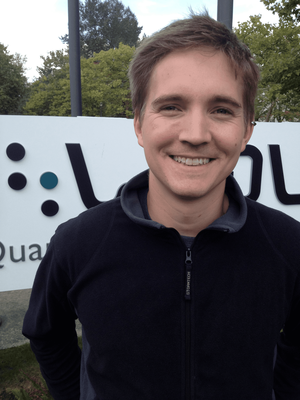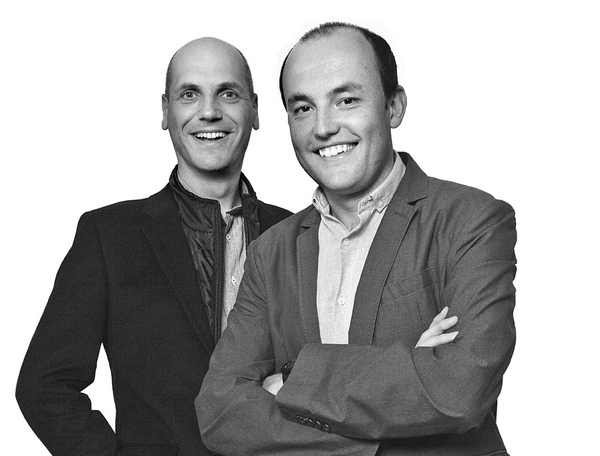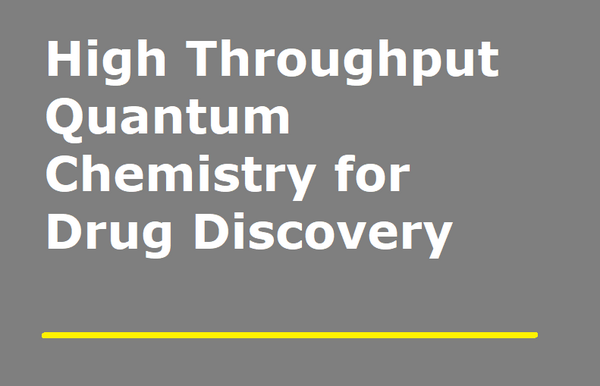[Interview] How D-Wave Brings Quantum Computing Into Biology
In its 2020 Tech Trends report, CB Insights has profiled the 14 tech trends that it considers deserving attention in 2020 and beyond -- quantum computing being on the list. There has been a wave of scientific and technological breakthroughs in this area lately leading to a belief that the “prime time” for quantum computing has actually arrived and major technological disruptions in many industries are going to happen soon.
One of the fields that have emerged as ripe for quantum innovation is pharmaceutical research -- since biology certainly among the hardest scientific riddles out there, and solving biology requires outstanding computing capabilities, hardly realizable or even impossible with commonly used systems.
D-Wave is among pioneers and industry leaders, with 20-years of R&D in quantum computing and in short, their biggest priority is working with companies to develop practical applications for real-world problems, including pharmaceutical ones.
Quantum annealing -- D-Wave’s computational model -- is well suited for protein design, in particular. For example, San Francisco-based startup Menten AI has been using D-Wave’s hybrid solver technology to determine protein structure for de novo protein design. The results were promising, often outperforming purely classical solvers, and allowed them to find solutions faster than conventional methods. A few months ago their designs were computationally validated, chemically synthesized, and are now being advanced to live-virus testing against COVID-19.
To learn more about this exciting technology, its application use cases, possible limitations, and D-Wave’s developments, I asked several questions to Murray Thom, VP of Software and Cloud Services at D-Wave. Below is our interview:
Andrii: Probably everyone in computational drug discovery has heard about quantum computers and how disruptive they might become to the industry. But what is the reality right now -- is the technology mature enough to offer practical value to commercial end-users?
 Murray: The reality is that it’s possible right now to use quantum computers for real-world problems. We have several customers already seeing early practical value from doing so. And it’s not just in drug discovery. We launched the first commercially available quantum computer in 2011 and customers have worked with us over the years to build more than 250 early applications across industries.
Murray: The reality is that it’s possible right now to use quantum computers for real-world problems. We have several customers already seeing early practical value from doing so. And it’s not just in drug discovery. We launched the first commercially available quantum computer in 2011 and customers have worked with us over the years to build more than 250 early applications across industries.
With drug discovery in particular, quantum computing is especially well-suited to solve complex problems. For example, one of our customers is San Francisco-based protein design pioneer Menten AI. They’ve been working with our systems for two years and developed the first process using hybrid quantum programs to determine protein structure for de novo protein design. So far, they’ve seen very encouraging results that often outperform classical solvers. At this stage, their unique protein designs have already been computationally validated, chemically synthesized, and are being advanced to live-virus testing against COVID-19. It’s an exciting time in this industry. With innovators like Menten AI paving the way, I think we’re going to see real-world quantum computing applications proliferate in the coming months and years for drug discovery.
Andrii: What’s the science behind D-Wave’s Quantum Computer, how does it operate?
Murray: Our computers use quantum annealing to solve extremely complex problems. A common way to describe how our systems work is an energy landscape. In nature, physical systems trend toward low energy states (example, a ball rolls down a slope or a pot of water cools to a lower temperature). Quantum annealing works the same way. Users program the system by mapping their problem onto the quantum processing unit (QPU). If the problem is represented by an energy landscape, the lowest point corresponds to the best possible outcome.
The system is able to find the best solutions so quickly because it considers all the possible outcomes simultaneously. The system is probabilistic, not deterministic, so it finds many extremely good answers in a short amount of time (thousands in a second, for example, versus one answer after a long period of time).
We also believe that hybrid computing is extremely important to the future of quantum application development, in which a user leverages both quantum and classical systems to solve a complex problem efficiently. Our hybrid solver service, which users can access in the cloud through Leap, can run problems with up to 1 million variables on general problems.
Andrii: What kind of tasks are best suited to be solved by quantum computing? What are the typical use cases in pharmaceutical research that are most relevant for this technology?
Murray: Quantum computing is capable of solving an array of complex problems with real-world implications. Today, our systems are particularly well suited to optimization problems, which are critically important in virtually every industry. This could look like anything from optimizing the routes of thousands of taxis in New York City or it could look like optimizing the shape of an aircraft for improved aerodynamics. But our systems aren’t limited to optimization; they’re capable of solving an array of NP-hard problems including material simulation and quantum chemistry problems.
In pharmaceutical research, the applications are particularly numerous. Quantum computing can reduce the time it takes to identify and discover new drugs, improve protein design, and allow pharmaceutical companies to build new molecules with quantum computers in addition to test tubes. Quantum algorithms that are particularly suited for life sciences include sequence optimization, configuration optimization, computational chemistry, molecule unfolding, machine learning and optimization, and generative modeling with Boltzmann machines. Quantum applications that are particularly suited for life sciences range from discovery to approval. Applications like lead generation with protein design for drug and enzyme discovery; preclinical research looking at feature selection and machine learning; and clinical development for clinical trial selection and optimization. There are also additional quantum applications in medical imaging and image analysis, early disease detection, and genomics. Quantum material simulation, for example, is one of the most important and compelling first application areas of quantum computing. It has the potential to disrupt major fields like nanotechnology, biotechnology, and quantum chemistry. Annealing quantum computing provides a natural way to model complex quantum systems, mimicking the effects of nature to reproduce key observable properties. Plus, it sidesteps the need for error correction that plagues other approaches to quantum computing. A paper we published in Nature in 2018 exhibited the first large-scale quantum simulation of a topological state of matter. That kind of simulation represents a major step toward reducing the time and cost of physical material research and development.
In conversations with customers and other business decision-makers, major drug, and life sciences companies are investing resources and getting ready today. Committing to new technology like quantum computing shows that large businesses and disruptive start-ups recognize the potential for early adopters to gain a critical advantage.
Andrii: Do you have ongoing research projects with Life Science organizations? How do you help them? Are you involved in science projects related to COVID-19?
Murray: In March we announced the immediate availability of free access to our quantum systems via the Leap quantum cloud service for anyone working on responses to the COVID-19 crisis. Joining the effort were partners and customers like DENSO, Forschungszentrum Jülich, Menten AI, NEC Solution Innovators Ltd., OTI Lumionics, QAR Lab at LMU Munich, Sigma-i, Tohoku University, Volkswagen and others. They helped provide access to engineering teams with expertise on how to use the quantum computer and formulate problems, as well as help in developing solutions.
One of our Japanese customers, Sigma-i, was able to build an optimization formulation for how to allocate critically ill patients in order to reduce overflow at any one hospital. And Menten AI’s unique protein designs have been computationally validated, chemically synthesized, and are being advanced to live-virus testing against COVID-19.
Andrii: What are the major limitations of quantum computing at present (at D-Wave and in general) and how are you going to advance the technology behind the current state-of-the-art?
Murray: Truthfully, the biggest limitation to quantum computing development today is simply that we need more developers, researchers, and businesses using quantum systems and identifying more real-world problems that can be solved with quantum. It’s possible to start doing this today, as our customers have already proven, but the more people we have exploring and developing applications, the faster this technology is going to progress.
On the technical front, gate-model systems are still navigating the challenge of managing error correction before they can scale. For us at D-Wave, however, we’re focused on continuing to design systems that solve even larger and more complex business-scale problems. Our latest system, Advantage, represents the biggest milestone in that journey to-date. With 5,000 qubits, 15-way qubit connectivity, and an expanded hybrid solver service, users can run problems with up to 1 million variables. This gives customers — including those in the pharmaceutical industry — the ability to solve far larger, more complex problems and drive real-world value for their organizations.
Andrii: What’s your company’s offering to biotech clients and partners?
Murray: We also recently announced D-Wave Launch, a jump-start program for businesses who want to get started building hybrid quantum applications today but may need additional support. We bring together a team of application experts and a robust partner community to help customers identify the best applications and to translate businesses’ problems into hybrid quantum applications. The extra support helps customers accelerate designing, building, and running their most important and complex applications while delivering quantum acceleration and performance. Along the journey, customers have access to our quantum computers through the cloud via our Leap quantum application environment, as well as training and professional services support.
Find out more information about D-Wave’s cloud services: https://www.dwavesys.com/take-leap
Topics: AI & Digital


